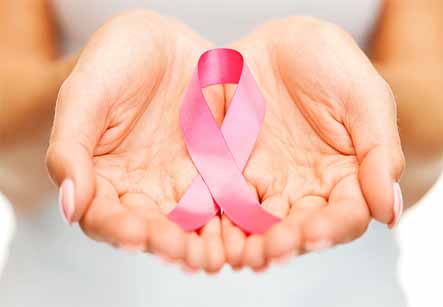Breast Cancer
Introduction
Breast cancer is a neoplastic condition which starts in the tissues of the breast. This is very common cancer in the women. Over the course of a lifetime, 1 in 8 women is usually diagnosed with breast cancer. There are two main types of breast cancer:
• Ductal carcinoma which starts in the tubes (ducts) that transports the milk from the breast to the nipple. This is the most common type of breast cancer.
• Lobular carcinoma starts in the tissue or parenchyma of the breast, called lobules, which produce milk.
• In rare cases, breast cancer can start in other areas of the breast.
Breast cancer may be invasive or noninvasive. Invasive means the cancer cells are spread from the milk duct or lobule to other tissues in the breast, while Non-invasive means the cancer has not yet invaded other breast tissue. Noninvasive breast cancer is called “in situ.” This entity has two types:
• Ductal carcinoma in situ (DCIS), or intraductal carcinoma- this is breast cancer of the lining of the milk ducts that has not yet invaded nearby tissues. This condition may progress to invasive cancer if left untreated.
• Lobular carcinoma in situ (LCIS) is cancer in the milk-forming breast tissue and is a marker for an increased risk of invasive cancer in the same or both breasts.
Many breast cancers are sensitive or dependant on the hormone estrogen. This means that estrogen supports the growth of the breast tumours. Such cancer cells have estrogen receptors on their surface. These cancers are called as estrogen receptor-positive cancer or ER-positive cancer.
Some women have HER2-positive breast cancer. HER2 refers to a gene that helps the cells to grow, divide, and repair themselves. When cells (including cancer cells) have too many copies of this gene, they grow faster. In general, the women with HER2-positive breast cancer have a more aggressive disease and a higher risk of recurrence of the disease than women without this type. However, this may be modified with specifically targeted treatments against HER2.
Risk factors for breast cancer which cannot be modified include:
• Age and gender –the risk of developing breast cancer increases as the age progresses. Most advanced cases of breast cancer are found in women over age 50. Women are 100 times more likely to get breast cancer than men.
• Family history of breast cancer –there is a higher risk for breast cancer if a close relative is affected by a breast, uterine, ovarian, or colon cancer. About 20 – 30% of women with breast cancer have a family history of the disease.
• Genes — Some people have genes which make them susceptible to develop breast cancer. The most common gene defects are found in the BRCA1 and BRCA2 genes. These genes normally produce proteins that protect against the cancer. If one of the parents passes a defective gene to the patient, there is an increased risk for breast cancer. Women with one of these defects have about an 80% chance of getting breast cancer sometime during their life.
• Menstrual cycle — Women who got their periods early (before age 12) or went through menopause late (after age 55) have an increased risk for breast cancer.
Iranian scientists have developed the country’s first anti-cancer drug using nanotechnology

Cancer treatments may include:
Cancer treatment may be local or systemic.Local treatments involve only the area of disease. Radiation and surgery are forms of local treatment. However, systemic treatments affect the entire body. Chemotherapy is a type of systemic treatment.
1. Chemotherapy medications to kill cancer cells
2. Radiation therapy to destroy cancerous tissue
3. Surgery for removalof cancerous tissue –surgery may involve a lumpectomy which removes the breast lump or a mastectomy to remove all or part of the breast and possible nearby lymph nodes and other structures
4. Hormonal therapy is prescribed to women with ER-positive breast cancer to block certain hormones that support the cancer growth. Tamoxifen is the drug given for Hormonal therapy. This drug blocks the effects of estrogen, which helps the breast cancer cells to survive and grow. Most women with estrogen-sensitive breast cancer benefit from this treatment.
Many breast cancers are sensitive or dependant on the hormone estrogen.
Another class of hormonal therapy medicines are called as aromatase inhibitors, such as exemestane. These medications are shown to work even better than tamoxifen in postmenopausal women with breast cancer. Aromatase inhibitors block estrogen production.
Targeted therapy or biologic therapy – this is a newer type of cancer treatment. This therapy uses special anticancer drugs which induce certain changes in a cell that can lead to cancer. One such drug is trastuzumab. It may be used for women with HER2-positive breast cancer.